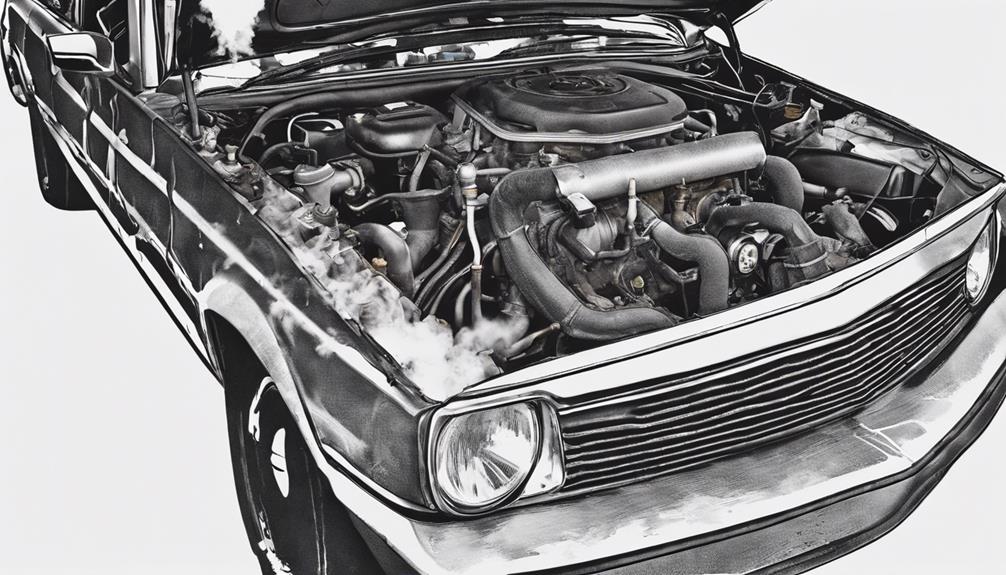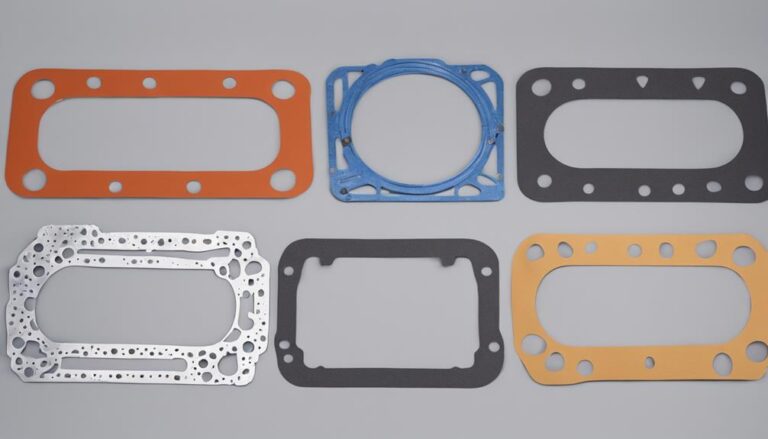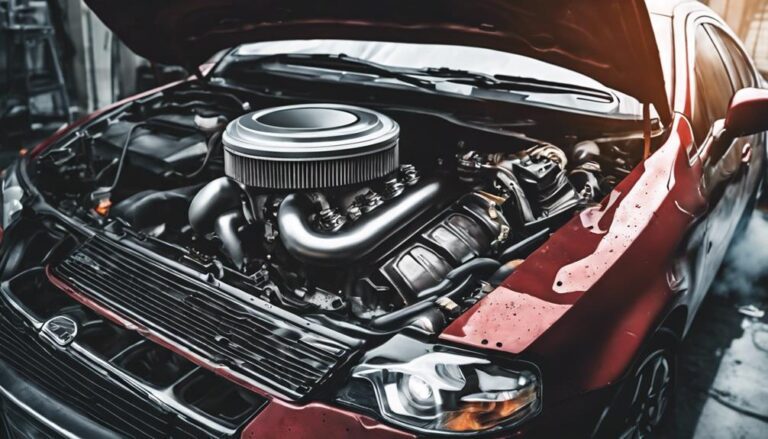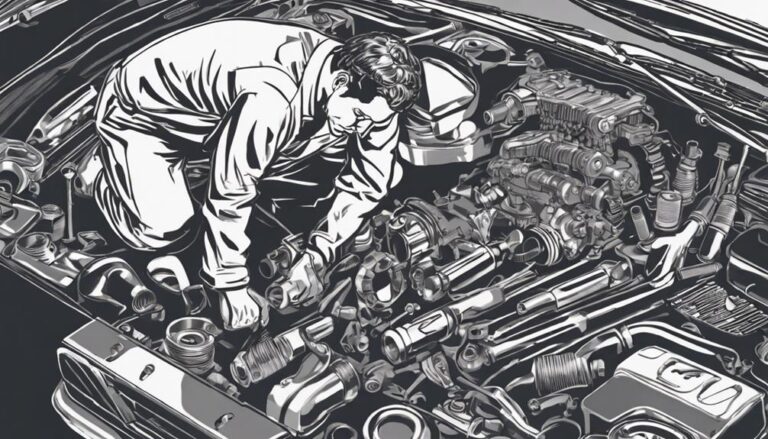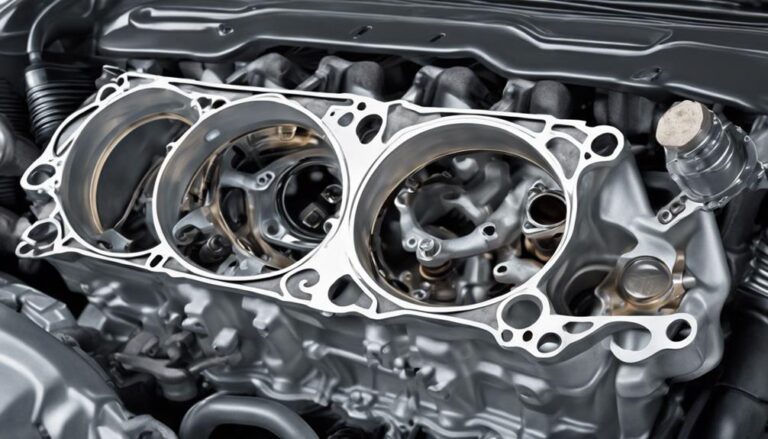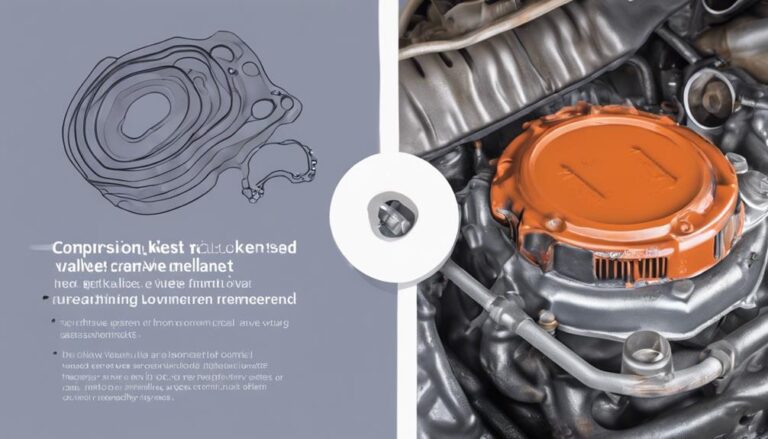Identifying Signs of Head Gasket Failure in Cars
Imagine this: you lift the hood of your car, and a subtle scent of coolant meets your nose. As you peer closer, you notice a milky substance on the dipstick.
What could this mean? Well, those are just a couple of hints that your car's head gasket might be in trouble. But what are the other signs you should be on the lookout for? Let's explore together.
Key Takeaways
- Milky oil on dipstick indicates potential head gasket failure.
- White smoke from exhaust signals coolant leakage and engine damage.
- Overheating engine and loss of power are signs of head gasket issues.
- Immediate action and timely head gasket replacement prevent severe engine damage.
Milky Oil on Dipstick
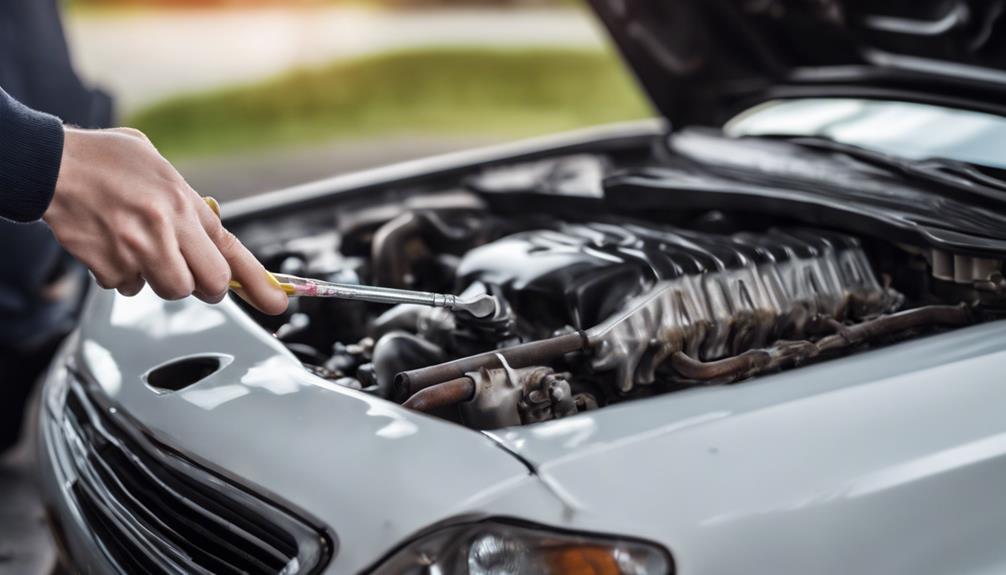
If you notice milky oil on the dipstick of your car, it could indicate potential head gasket failure. This is a key sign that shouldn't be overlooked. When the head gasket fails, it can allow coolant to leak into the engine oil passages, leading to oil contamination. This issue arises due to the close proximity of the coolant passages to the engine oil passages in the engine block.
To address this problem, immediate action is necessary. Ignoring milky oil can result in severe engine damage and costly repairs. Proper engine maintenance is essential to prevent such issues. Regularly checking the oil for any signs of contamination, like the milky appearance, is a good practice.
If you find milky oil on the dipstick, it's recommended to have your vehicle inspected by a qualified mechanic. They can diagnose the problem accurately and suggest the appropriate repairs. Remember, addressing oil contamination promptly is key to maintaining the health of your engine.
Overheating Engine
An overheating engine signals a critical issue that demands immediate attention to prevent further damage. When your engine temperature gauge starts climbing into the red zone, it's important to address the underlying problem swiftly. Here's what you need to know:
- Cooling System: The cooling system is responsible for regulating your engine's temperature. When it fails to function correctly, your engine may overheat. Common cooling system issues include low coolant levels, a malfunctioning thermostat, or a faulty water pump.
- Radiator Issues: The radiator plays an important role in dissipating heat from the engine. If there are problems with the radiator, such as leaks or blockages, it can lead to inadequate cooling and eventual engine overheating.
- Hose Leaks: The hoses in your cooling system transport coolant to and from the engine. If there are leaks or cracks in these hoses, the coolant may not circulate properly, causing the engine to overheat.
Ignoring signs of overheating can result in severe engine damage, so make sure to address these issues promptly to keep your vehicle running smoothly.
White Smoke From Exhaust
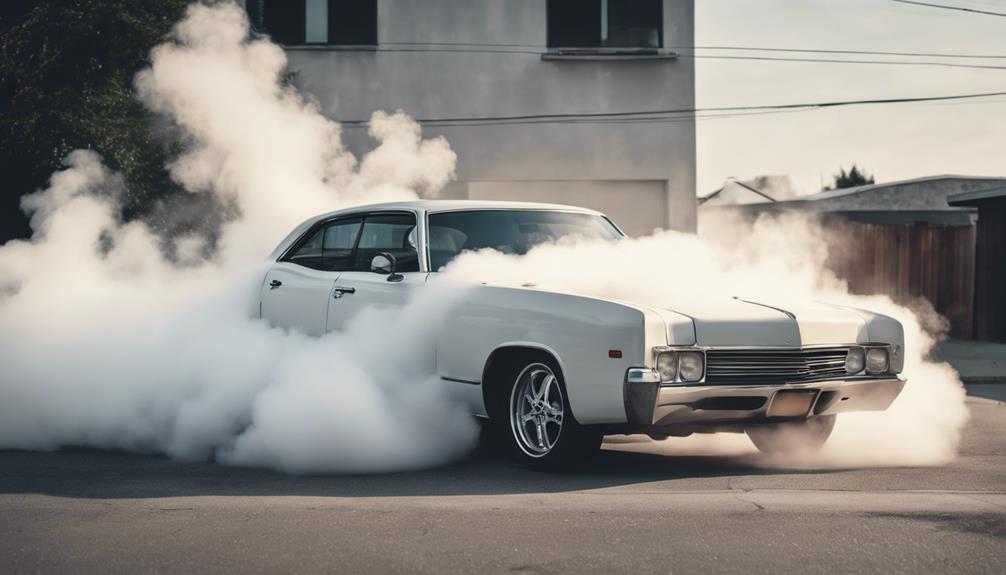
Addressing signs of overheating promptly is essential; now, let's examine the occurrence of white smoke from the exhaust as a potential indicator of head gasket failure. When white smoke billows from your car's exhaust, it could signify coolant leaking into the combustion chamber due to a compromised head gasket. This can lead to overheating, engine damage, and decreased performance.
To help you better understand the implications of white smoke from the exhaust, let's look at the causes and prevention methods in the table below:
| Causes of White Smoke | Prevention | Impact on Vehicle |
|---|---|---|
| Leaking head gasket | Regular maintenance checks | Engine damage |
| Coolant entering combustion chamber | Timely head gasket replacement | Decreased performance |
| Overheating engine | Monitoring coolant levels | Increased repair costs |
To prevent white smoke from becoming a persistent issue, it is vital to address head gasket problems promptly. Regular maintenance and keeping an eye on coolant levels can help mitigate the risks associated with head gasket failure.
Coolant Leaks
At the onset of coolant leaks in your car, prompt identification and repair are important to prevent further damage to the engine. Coolant leaks can stem from various issues within the cooling system, such as rusted pipes or a cracked reservoir. Here are some key points to take into account:
- Rusted Pipes: Over time, the metal pipes carrying coolant throughout the engine can deteriorate due to rust. This corrosion weakens the pipes, making them susceptible to leaks. Regular inspection of these pipes can help catch any rust-related issues early on.
- Cracked Reservoir: The coolant reservoir, responsible for maintaining the proper level of coolant in the system, can develop cracks. These cracks may result from wear and tear or overheating of the engine. A cracked reservoir can lead to coolant leaks, causing the engine to overheat if not addressed promptly.
- Visible Coolant Puddles: One of the most apparent signs of a coolant leak is the presence of colorful puddles underneath your parked car. The color may vary depending on the type of coolant used, but any pooling liquid should prompt immediate investigation in order to prevent further damage.
Loss of Engine Power

What causes a sudden loss of engine power in your vehicle, and how can you identify this issue efficiently?
A common culprit for a sudden loss of engine power is a failing head gasket. When the head gasket fails, it can lead to compression loss in the cylinders, resulting in reduced power output.
This can manifest in various ways, such as poor acceleration and decreased fuel efficiency. If you notice your vehicle struggling to accelerate as it once did, or if you find yourself needing to press the accelerator harder to achieve the same speed, it could be a sign of engine power loss due to head gasket issues.
Additionally, if you observe a drop in fuel efficiency without any apparent reason, it might be related to the compromised engine power caused by head gasket failure.
To address this problem efficiently, it's important to have your vehicle inspected by a qualified mechanic to determine the root cause of the issue and take appropriate action to prevent further damage.
Frequently Asked Questions
How Long Can a Car Typically Be Driven With a Head Gasket Issue Before Causing Further Damage?
You should not drive a car with a head gasket issue for long. Continuing could lead to severe engine damage. Repairing the gasket promptly is essential as delaying might escalate costs and make replacement necessary.
Are There Any DIY Methods to Temporarily Fix a Head Gasket Issue in an Emergency Situation?
In an emergency, remember quick fixes are temporary. DIY solutions like sealants can buy time, but professional repair is crucial. Address the head gasket issue promptly to prevent further damage. Your safety matters.
Can a Head Gasket Failure Be Caused by Other Underlying Issues in the Engine?
If you're wondering if a head gasket failure can stem from other engine issues, the answer is yes. Underlying causes like overheating, coolant leaks, or poor engine maintenance can lead to head gasket failure.
How Much Does It Typically Cost to Repair a Head Gasket in a Car?
When repairing a head gasket in your car, consider various repair options. Evaluate warranty coverage, cost comparisons, and potential DIY alternatives. Understanding these factors can help you make an informed decision about the repair process.
Are There Any Preventative Measures That Can Be Taken to Avoid Head Gasket Failure in the Future?
To prevent head gasket failure, make sure your vehicle receives regular preventative maintenance. Monitor engine temperature to avoid overheating, a common cause of gasket issues. Timely inspections and cooling system checks can help prevent costly repairs down the road.
Conclusion
To sum up, identifying signs of head gasket failure in cars is vital for maintaining the health of your engine.
From milky oil on the dipstick to white smoke from the exhaust, these indicators can save you from costly repairs down the road.
Remember, a failing head gasket is like a ticking time bomb waiting to detonate, so be vigilant and address any symptoms promptly to avoid catastrophic engine damage.

